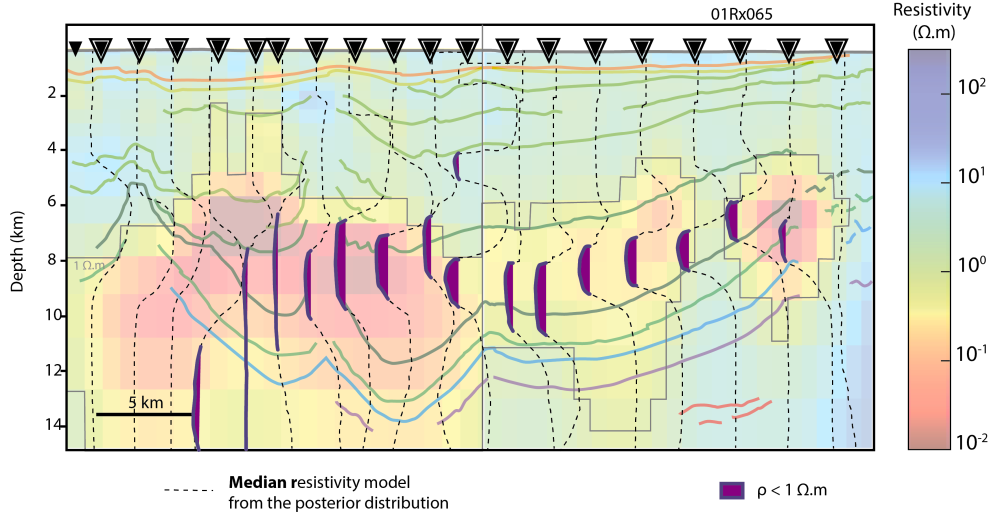The PhD defence and trial lecture will be held in Auditorium 1 in The Geology Building. In some cases, it will be possible to attend the trial lecture and dissertation digitally, in that case a link to Zoom will be posted.
Trial lecture
Friday 26 January, 10:15-11:00, Aud 1, The Geology Building
The role of artificial intelligence in geophysics: current and future
Conferral summary (in Norwegian)
The sun’s energy can interact with the Earth’s magnetic shield, which can be used to expose different structures in the Earth’s interior. In this thesis, we present a new model of geoelectrical structures beneath the Barents Sea obtained with an automated trial and error process called inversion. Our results suggest that the brittle crust can become so severely stretched that saline water can circulate and react with the upper mantle. This reaction releases hydrogen, a potential source of carbon-free energy.
Main research findings
Popular scientific article about Corseri’s dissertation:
Using solar activity to see deep into the Earth’s crust
The disturbance of the geomagnetic field by solar particles can help us see deep into the Earth’s interior. The way electrical current flows in geological layers often depends on the conductive properties of the fluid filling the empty spaces within the rock. When the Earth’s crust is stretched, seawater can move down to the viscous layer beneath, called the mantle. Here, we investigate the geoelectrical properties of a hyperextended rift system in the Barents Sea and unveil possible fluid circulation between sediments and the upper mantle. This is important because seawater reacts with the mantle rocks to release natural hydrogen, a potential source of decarbonized energy.
The foundation of this doctoral work lies in the analysis of electromagnetic recordings collected on the seafloor of the Barents Sea. A new model of the Earth geoelectrical structures is obtained with an automated trial-and-error process called inversion. However, multiple models can equally explain the data. Therefore, we employed a probabilistic approach complemented by machine learning to generate thousands of best-fit models. We identify two likely conductors in deeply buried sediments and upper mantle. We interpret them as rocks filled with saline fluids, partially consumed through a geochemical reaction with mantle rocks that releases natural hydrogen.

Photo and other information:
Press photo: Romain Corseri, portrait; 650px. Photo: Private
Other photo material: Figure with description and credit as specified in the article above, size 1920px.
